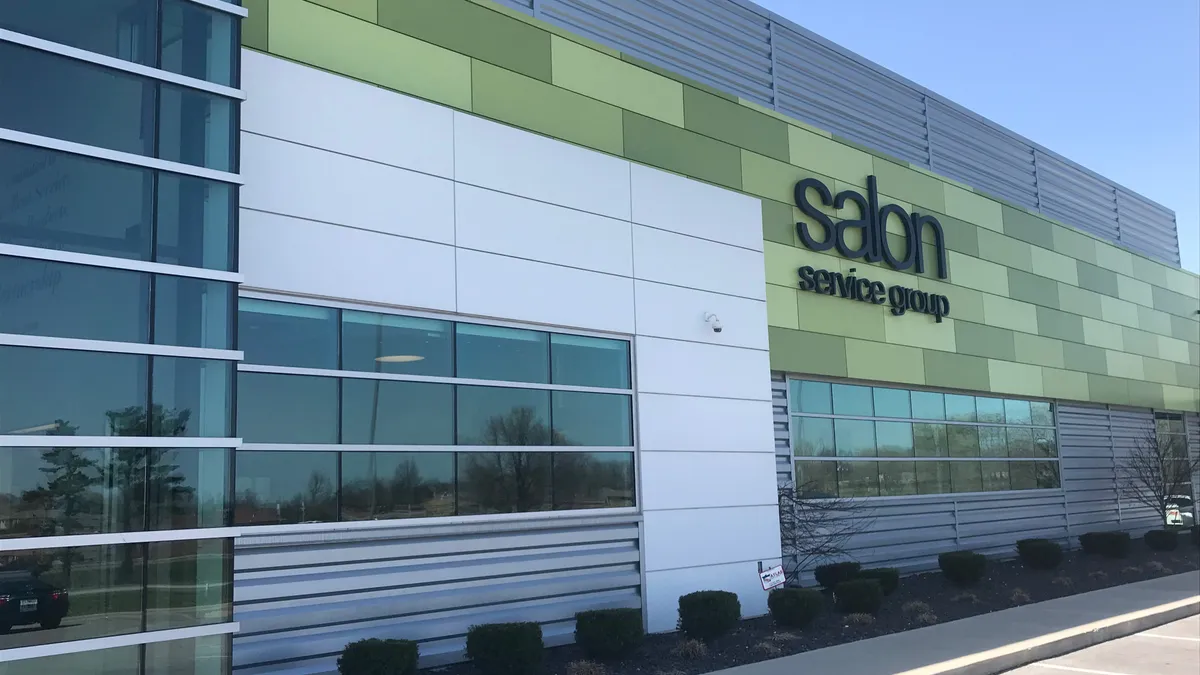As an East Coast city dweller, I tend to think of the Midwest as a place with rolling plains, tornado shelters (I watched the Wizard of Oz A LOT as a child) and people who say “pop.”
While my recent trip to Springfield, Missouri, confirmed I wasn't exactly wrong, Middle America is so much more than acres of farmland and houses that look like Auntie Em’s.
“There’s lots of trucking companies here and freight railroads,” the taxi driver told me on the drive from the airport. That was evident as we drove along, passing more trucks on I-44 than we did cars. We crossed over railroad tracks that run through the city. At one point, the tracks, owned by BNSF, divided the city into North and South Springfield.
Even today, BNSF is among the top 50 employers in Springfield, along with numerous other transportation and manufacturing companies.
I spent most of my quick stint in Springfield at the offices of the Salon Services Group (SSG), a distributor that partners with cosmetic brands and distributes to cosmetologists.
The building wears many hats. A small store with salon line beauty products sits in the front. Conference rooms and modern offices with sleek, colorful furniture occupied the middle part. Some of the walls are constructed from retired rail cars and shipping containers.
In the back sits SSG’s warehouse. At just 40,000 square feet it’s relatively small by today's warehouse standards, but it buzzed with activity as workers pushed carts layered with parcels through the aisles.
The Professional Beauty Association (PBA) chose SSG as the host for its 2018 Distributor Executive Conference, and Supply Chain Dive was invited to speak about ongoing trends impacting the industry, including the trucking capacity crunch, changing store concepts and the importance of visibility into supplier operations.
As distributors, many conference attendees were worried about their relevance in an era of lean, streamlined supply chains. Many manufacturers, like Kellogg, have changed their supply chain to such an extent that they’ve eliminated the middle man.
Then there’s the dreaded 'A' word for distributors: Amazon. Most distributors at the conference said they viewed Amazon as a competitor. With Amazon’s marketplace, vendors can sell directly to consumers on the platform and use Amazon as their distributor, logistics provider, warehouse manager or all of the above.
Many attendees at the conference work with luxury beauty brands that sell exclusively to salons. If the brands started to sell on Amazon — whether B2B to the salons or directly to the consumer — that would entirely shift the business model for beauty distributors.
Should distributors be worried about Amazon? Probably. Should they be worried about losing relevance altogether? I don’t think so. Distributors still hold some key traits that an online platform can never replace.
“Personalization,” said one attendee. Amazon may have the technology figured out, but it doesn't have the inherent knowledge of a specialized product that distributors who’ve been in business decades would have. It also lacks the human connection that many manufacturers and customers continue to value in this industry.
Regional knowledge is another point in distributors’ favor. SSG distributes to 11 states in the Midwest with stores in six of those. The distributor knows its locale and customers well, and uses that knowledge to tailor services and maintain relationships.
At the same time, working regionally and with a specific product can create tunnel vision. As one attendee told me, she often doesn't think about global trends in the greater supply chain because of her focus on her region.
From my visit to Springfield, it’s evident how easy it can be to lose sight of the bigger picture. Even within a city of 160,000 people, there are distribution centers, retail stores, trucking companies and freight railroads. Why look elsewhere when the whole supply chain appears to be reachable within a 10-mile radius?
But by their nature, supply chains span across continents and oceans. While SSG distributes to just a portion of the U.S., it works with Moroccan Oil, which sources a critical ingredient in its product lines from (you guessed it) Morocco.
Turning a blind eye to issues in any part of the chain can ripple downstream, potentially all the way to the consumer.
If distributors focus too much on local operations and ignore bigger trends, will they become the weakest link in the supply chain? Maybe game show host Anne Robinson has the answer to that question.















